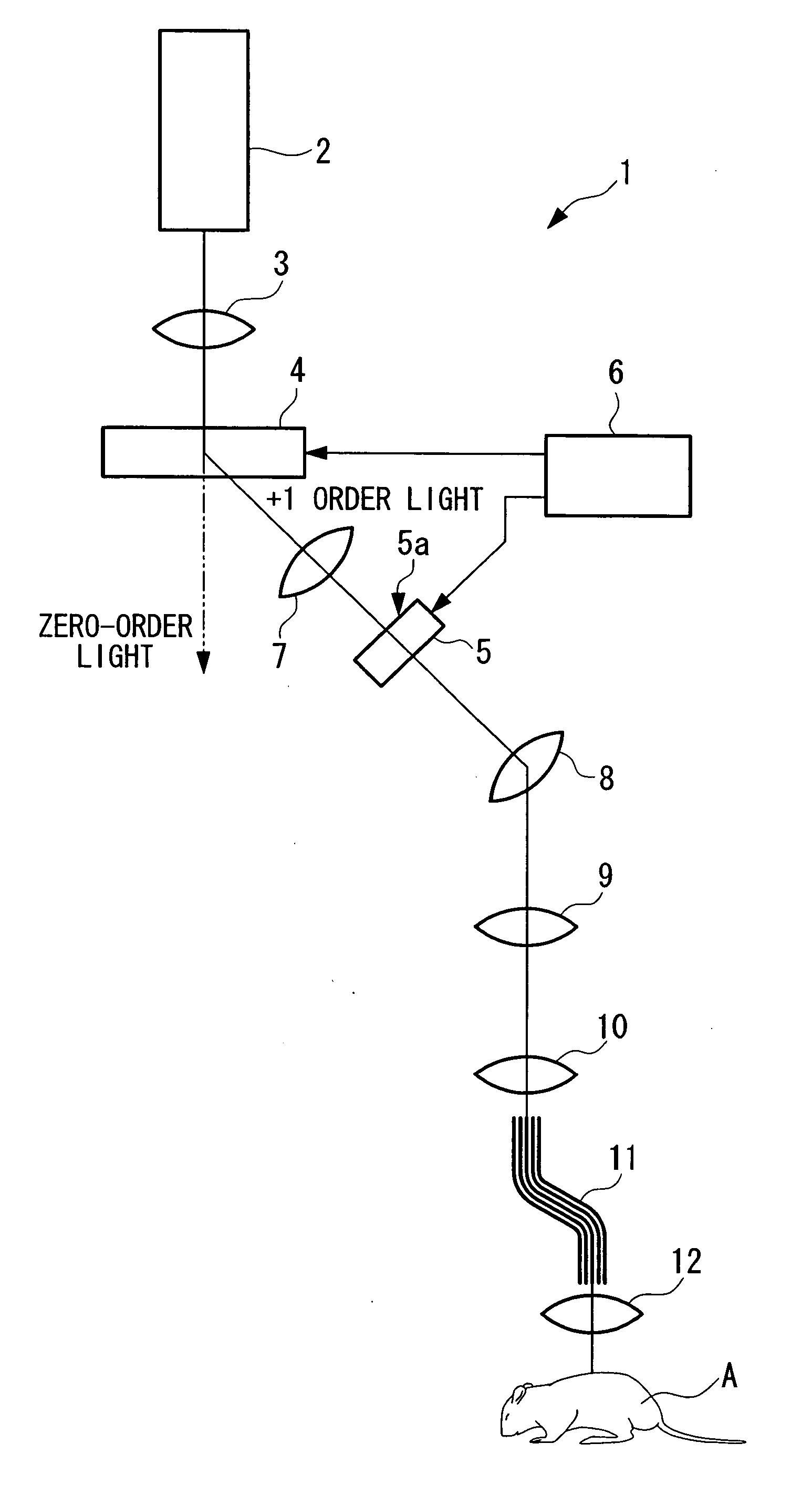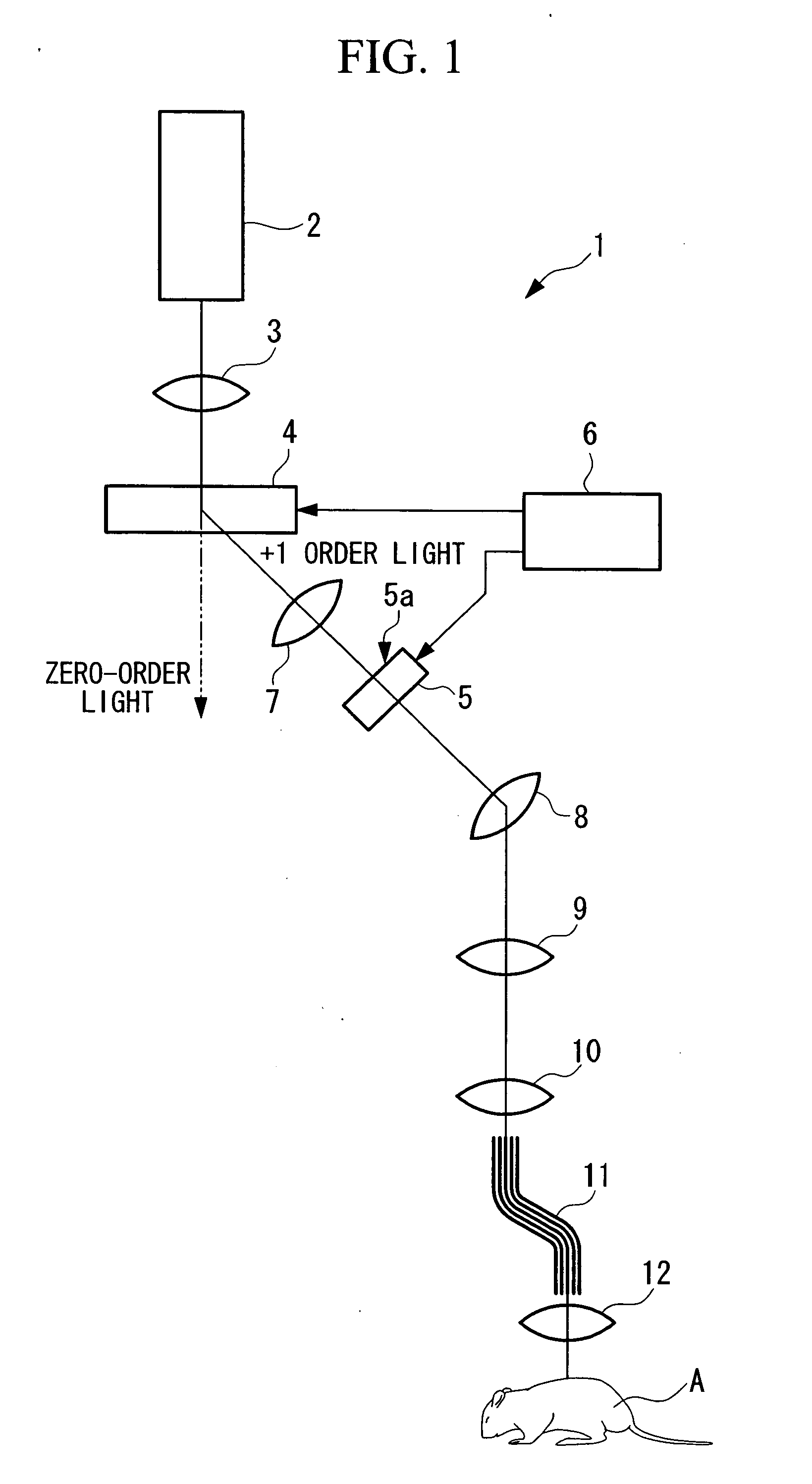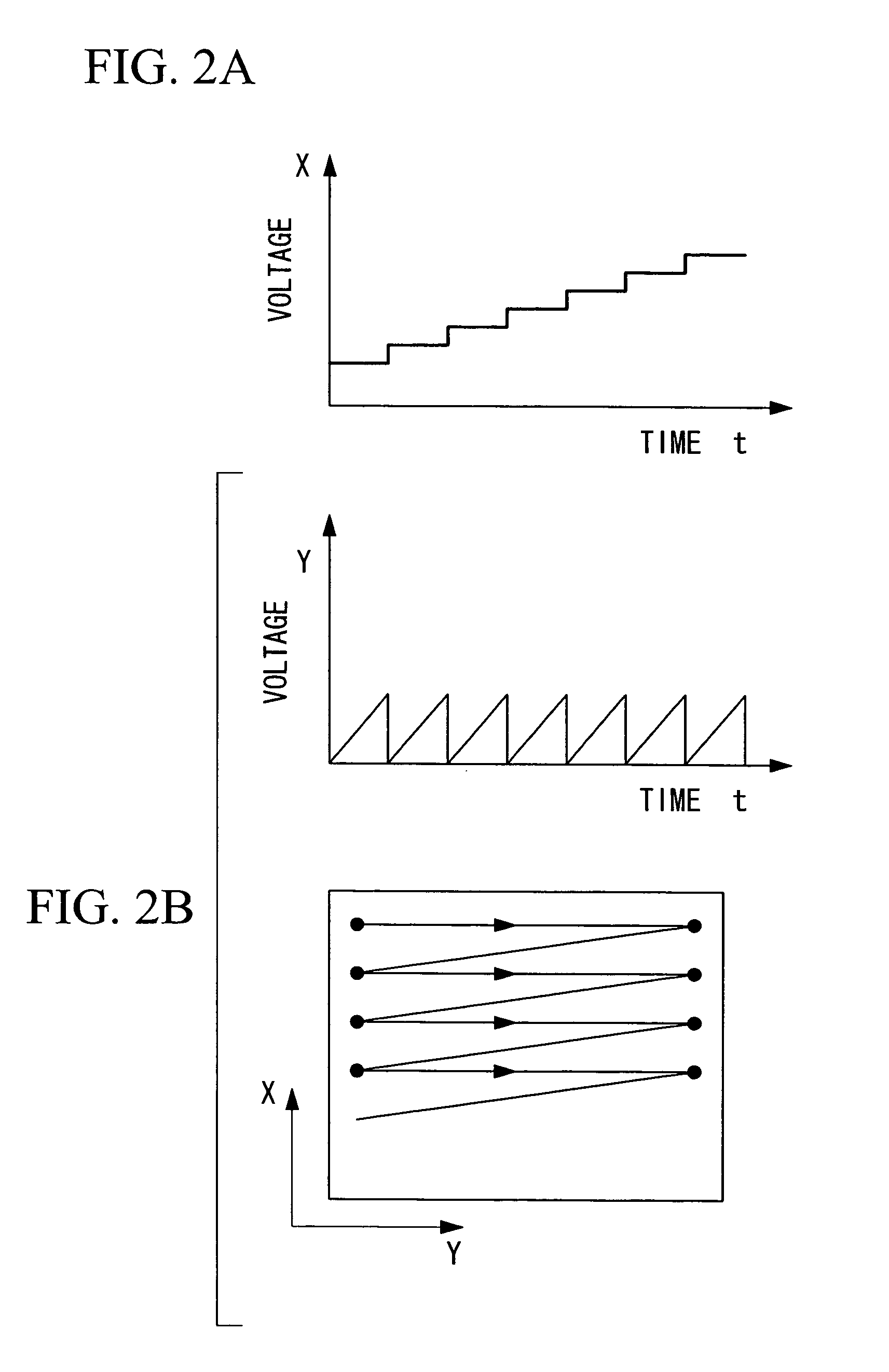Optical stimulation apparatus and optical-scanning examination apparatus
a technology of optical stimulation and examination apparatus, which is applied in the direction of optical radiation measurement, fluorescence/phosphorescence, instruments, etc., can solve the problems of high cost, increased overall size of the apparatus, and difficulty in scanning at a speed higher than
- Summary
- Abstract
- Description
- Claims
- Application Information
AI Technical Summary
Benefits of technology
Problems solved by technology
Method used
Image
Examples
Embodiment Construction
[0028] An optical stimulation apparatus according to a first embodiment of the present invention is described below with reference to FIG. 1 and FIGS. 2A to 2C.
[0029] As shown in FIG. 1, the optical stimulation apparatus 1 of this embodiment includes a laser light source 2 that emits laser light; a beam expander 3 that expands the laser beam; a first acousto-optic device (AOD) 4; a second acousto-optic device 5; an AOD control apparatus 6 that controls the acousto-optic devices 4 and 5; a telescope lens 7 that maintains the beam emitted from the first acousto-optic device 4 at a specific beam diameter; a pupil-projection lens 8 that forms an intermediate image of the light emitted from the second acousto-optic device 5; an imaging lens 9 that focuses the light forming the intermediate image by the pupil-projection lens 8; a first objective lens 10 that images the light focused by the imaging lens 9; an optical fiber bundle 11 of which one end is disposed at the image position of th...
PUM
| Property | Measurement | Unit |
|---|---|---|
| oscillation frequency | aaaaa | aaaaa |
| frequency | aaaaa | aaaaa |
| optical | aaaaa | aaaaa |
Abstract
Description
Claims
Application Information
 Login to View More
Login to View More - R&D
- Intellectual Property
- Life Sciences
- Materials
- Tech Scout
- Unparalleled Data Quality
- Higher Quality Content
- 60% Fewer Hallucinations
Browse by: Latest US Patents, China's latest patents, Technical Efficacy Thesaurus, Application Domain, Technology Topic, Popular Technical Reports.
© 2025 PatSnap. All rights reserved.Legal|Privacy policy|Modern Slavery Act Transparency Statement|Sitemap|About US| Contact US: help@patsnap.com



